Search the Community
Showing results for '"switch batteries"'.
-
hey gents! The goofy battery relay works ok when brand new… … and you don’t take a lot of time when pushing the switch… But… if you push the switch real slowly… you can either find a dead spot with no power running through it… or both batteries connected allowing for excess voltage from one battery finding another way to go to ground… if you study the electrical drawings for the switch and relays…. you may find that they theoretically make sense… but, in real life, with a bit of wear… remember to push the switch with intention… there are a few relays by the batteries that share the same part number… I bought a spare because the relay wouldn’t switch batteries… it turns out… the battery switching relay was attached to my dead battery…. O1s didn’t get the nice set of CBs in the tail… (‘94) pp thoughts only, not a mechanic… Best regards, -a-
-

Two different batteries installed in my plane??
LANCECASPER replied to M20TN_Driver's topic in Acclaim Owners
What @carusoam mentions. The people who write the POH aren't taking money out of their pockets to replace expensive relays. In practice, people who have replaced those relays find that it's better switch batteries when not under load. Quite a bit has been written on Mooneyspace about this. -

Two different batteries installed in my plane??
LANCECASPER replied to M20TN_Driver's topic in Acclaim Owners
Glad to hear you are hooked up with the batteries. I've said it before, but if we could have one thread on here where when we find who has the best deals on items, we could post, that could be a nice savings for the group. Either Battery 1 or 2 will start it and take care of everything else, but the GPU connection is on battery #1 and the panel switch has to be on Battery #1 if you are getting a GPU start. It's good to exercise both batteries but not good to switch batteries after start-up. On odd days I select Battery #1 on for start and use that day. On even days I use Battery #2. -
My first post here. I'm a partner in a 95 Mooney Ovation (M20R). On a 2.5 hour flight back to home airport, day VVMC. Hear a whir and then silence in the headset, and then alt/volt light starts flashing on the annuciator panel. Cycle the alternator switch and circuit breakers several times and get nothing. Shed excess electrical load, just running #2 radio and transponder, led beacon and nav light. I have about 80 miles and 11,000 feet to lose. Decide to continue to home. Both batteries are new, figure I can switch batteries if the gear won't come down. Land with no issues. Buy replacement alternator, pull the old alternator out. The shaft of the alternator had snapped off and dropped the elastomeric washer, gear and shaft. IT was just sitting there grinding against the crankshaft gear. Only reason I didn't have catastrophic failure is because the gear was to big to properly wedge against the crankshaft gear. Lots of metal shavings. Oil pump is destroyed. Camshaft is ruined. I'm hoping the crankshaft is still ok, but will let the shop decide. Will have to replace the gears though. Prior to event, oil analysis and oil filter visual inspection showed very small pieces of orange substance. Blackstone labs said it was probably intake manifold couplings getting older. The engine was making slightly more metal, but nothing of immediate concern. Alternator is a Hartzell ALV-9610. The castle nut on the end of the shaft broke in half. We found it in the oil pan. 420 hours since installed. Didn't even make it to the 500 hour inspection. I don't know what the lesson is, but orange stuff in the oil filter could be the elastomeric washer on your alternator giving up.
-
I can't confirm that either way but its just a matter of starting up on the good battery and seeing a normal ammeter/load indication. But if the Amps are 30-40 or more , which is what you could see on the dead battery, and doesn't come down right away, then that is really hard on the alternator. But I expect you won't see that as long as your on the good battery, but good to verify before departing. But if you look at your KOEL in the limitations section of your POH you'll read both batteries are required for even Day VFR. Edit: Maybe what your thinking of is that it can be hard on the system to switch batteries after you start up and then switch to the weak battery. That is ill advised.
-
There has been a lot written on that : https://mooneyspace.com/search/?q="switch batteries"&quick=1&updated_after=any&sortby=relevancy
-
I’ve heard it said not to switch batteries when it’s running too. Could someone explain the thinking behind that?
-
that may be true but there's also a very expensive battery relay that can be damaged when you switch batteries under power.
-
I would make sure that your shop does a capacity test every annual. It depends on a lot of factors: Climate, your charging system, how often you fly, whether you desulfate with a batteryminder. Some long bodies seems to eat batteries for lunch. I think that has to do with the fairly crude trickle charge circuits on the airplane and your voltage regulator output. Whether this makes any difference I don't know, but I make sure to exercise both batteries. If I'm flying on an odd day I start it on Battery 1. If I'm flying on an even day I'll start it on Battery 2. I think a lot of airplanes are left on #1 most if not all of the time and when it gets to the point where it starts real slow or not at all, then they switch to #2 and realize that they have two batteries that need replacing. By using both I want to know ahead of time if I'm starting to have an issue with either. Since being told by a few people that really know Mooneys well, not to Switch batteries when it's running I haven't done that. Obviously I would follow the checklist in an emergency.
-
This is an update on my Mooney Ovation 3. I just got my plane back this week. It took almost 5 weeks because they couldn't get the voltage regulator replaced because they had to get a letter from Mooney and then go to the OEM and have them rebuild/replace my old one. Also, both of my Concord batteries failed the cap test and I had to replace both of them. They were almost 4 years old but had been operating fine and passed the cap test at my last annual. The alternator was fine and all the electronics were fine. Final analysis - Being stupid and not turning on the alternator before taking off and running the battery so low it was pulling so much amperage from the alternator that it burned out the voltage regulator before it burned out the alternator and my instrument panel. Also, not catching any indication on the panel that the voltage regulator was not on. I had the panel lights checked, so it should have been caught at that point. In any event, the voltage regulator did what it was supposed to, the pilot did not do what he was supposed to. I got an expensive lesson on electrical systems from this experience. Basically, I learned the following: 1. turn the damn alternator on before takeoff (duh); 2. You can switch batteries in the air with the alternator on provided one of the batteries is not totally drained or really, really low; 3. You can't turn on the alternator onto a dead or almost fully drained battery or you will get an electrical rush into the lines that can damage your electrical system; 4. The back up alternator has its own voltage regulator (so burning out the main one has no effect on the back up whatsoever) but is not strong enough to run any nonessential items like flaps, trims and landing gear; 5. Training to lower the gear manually on my biannual flight reviews is NOT a waste of time; 6. Upon the voltage regulator burning out on the main alternator, I could have switched to the number 2 battery which was fully charged, popped the circuit breaker back in (provided the system had cooled down sufficiently and I was on the #2 battery, I had tried it a couple of times and it wouldn't go back in but was told I needed to give it more time, how much I don't know and don't want to find out in the future) and then turned on the back up alternator. Everything would have worked as designed including the flaps, trim and landing gear, but land as soon as possible; 7. Both batteries operate off the same circuit breaker; 8. The loss of the voltage regulator does not affect the batteries as it protects the alternator but is not on the same line as the batteries; 9. Make sure I do the run up and check that both alternators are operational - the back-up won't kick in until about 2000 rpm or more on my Ovation; 10. Spend more time with my instructor on electrical system issues and failures; 11. I was lucky this all happened on a perfectly clear day in VFR conditions. Had I been on an approach or in rough IMC, it could have been different; 12. You have to pull the battery breaker if you go to the emergency buss back up alternator, otherwise it could pull to much amperage if the other good battery is low. However, if the circuit breaker will go back in, you can turn on that battery long enough to configure the planes trims, flaps and landing gear for the landing. Then, it may need to be turned off since my understanding is that you can't chance that the backup alternator would send current to charge that battery and overload that system. 13. Never rush doing a checklist because you have to get off the runway because other planes are waiting to land. There is no taxiway at River Ranch so I had to do the runup on the runway while planes were waiting. No excuse just poor timing and planning. I should have taken my time. I didn't go through the full checklist and therein lies the problem. Don't rush, don't get out of your routine and always pull the full checklist from the checklist sheet and not from memory. 14. I did the correct procedure for a dead battery and an electrical system failure, if the battery circuit breaker would not reset on battery 2, shut down the main alternator button, turn on the emergency bus, fly the plane, contact the nearest tower with a sufficient length runway, lower the landing gear manually (lower gear knob, pull gear breaker, pull handle until the gear indicator panels shows gear is down and handle pull gets a little tight), land as soon as possible, land a little hotter with no flaps on a longer runway. At least I did one thing right. If the battery circuit breaker did reset, then I could have configured the plane for landing and after it was configured, pulled the battery circuit breaker to make sure there was not to much load on the backup alternator causing a failure there. All in all, it was an expensive, but important, lesson on the Mooney Ovation's electrical system. I don't hope to repeat it again. I would like to thank everyone for their comments. They were very, very helpful. Thank you, everyone.
-
I would only add a couple things to that. Don't take off if you know either battery is dead. You may need it plus it adds a huge strain on the system when it's trying to recharge it. If your alternator happens to be weak you will certainly find out on that flight. The trickle charging circuits are not real effective on these airplanes and on your year Bravo there's an in-line slo-blo fuse which is commonly blown (or at least it has been on a few that I've seen). There's a service bulletin regarding that. Also unless it is an emergency or close to it do not switch batteries once you've started the airplane. You can easy fry the switch and relay by switching it when the airplane is running. I exercise both of my batteries, but if it's an even date I use battery 2 for start up and flight. On odd days I use battery 1.
-
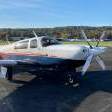
Anybody with Surefly installation experience
Robert C. replied to kmyfm20s's topic in General Mooney Talk
Great thread....am planning on ordering the SureFly shortly but have one question for the brain trust. Seems like the wire should be direct to one battery. Does that mean always starting the engine on that battery? I switch batteries for every flight to have the wear and tear on the batteries from starting be more even. Thanks in advance for your input. Robert- 82 replies
-
- ovation
- 24v system
-
(and 2 more)
Tagged with:
-
Pilot side battery has some hot memory things attached to it... Otherwise, the two batteries are treated the same... The one that is selected charges at a high rate, the one not selected gets the trickle charge... Switch batteries each flight to even things out... PP thoughts only, not a mechanic... Best regards, -a-
-
@rightforlineup, Simple, really. Fly the airplane every week or more frequently and switch batteries each flight (and you'll avoid having to buy a Battery Minder) On a 310HP-equipped Ovation, take off at 2700RPM, cruise 2550RPM (2500RPM for non-310 airplanes) Fly it LOP Ensure you have the three things that make up the best ignition system possible on this engine... Bendix mags Gold Seal ignition harness Iridium finewire plugs Energizer starter (no Sky-Tec) Buy a Reiff preheat system if you don't already have one Do not have your mechanic "wash" the engine at annual or any other time There's more, but those are staples to get you started. Steve
-
I always switch batteries after every shut down.
-
In the POH the first time it says to switch batteries is in the pre-flight prior to engine start and prior to powering up avionics or turning on the Alt field switch to check voltage. So this would be in line with what you are saying here. It also appears again in the prior to takeoff section where the engine is on, Alt field in on, and avionics is on and tells you to switch the batteries to ensure that they are both showing positive charge (>26.5v). So from what I am gathering here is that the first check with only the master switch on is ok but the second check during run up should be omitted? The only difference between your method and the POH (pre-flight check) is that the engine is on when you do it however with the Alt field switch off it should not matter if the engine is running or not. Does that follow?
-
I routinely switch batteries before every flight, but because I had heard long ago that switching batteries after engine start could result in increase wear and potential failure, I haven't switched them during the startup procedure. I supposed I could try Steve's process one time to see what happens while on the ground. Also, earlier in its life (and with the original owner) this plane did have a battery short during climb out which created a great electrical fire smell and prompted the owner to turn off all electrical and eventually do an emergency gear-up landing just to get on the ground as fast as possible. The shop that had maintained the plane and did the repair after the gear-up said that the only thing really necessary was to just switch the batteries in-flight and everything would have proceeded as normal, but I have to admit, if I smell an electrical fire while in flight I'm going to take extraordinary measures to get on the ground as well.
-
First, make it a habit to switch batteries before starting the engine every flight. Second, before turning on the Alt Field, switch batteries again after engine start...but before you switch on the Alt Field. So, assuming you finished your last flight, say, on BAT2, part of your flow for next flight would be... Switch to, and start engine on BAT1 Stabilize engine, switch briefly to BAT2 to check voltage (~ 8 seconds) Switch back to BAT1 and conduct flight Been using this flow on my two Concordes; both of which have passed 8 years’ service. Capacities for both are still equal to or better than 84%, and at last annual, were within 2% of each other. No battery minder present. This is a safe, expeditious, and effective way to determine the load on both batteries before you bring the rest of your avionics load online as well as the alternator. The 24v/300 amp switching relays (you have three in the avionics bay) are designed to manage switching of this nature, and are designed to last. Steve
-
Supposedly you shouldn’t switch batteries under load as the relay that does it fails prematurely, I would assume do to arcing across contacts. This from a well known MSC.
-
Yes Cruiser. I'm sure the #2 was good. I regularly switch batteries when starting and also keep an eye on the engine monitor. Thanks again, Bill
-
Yes, I switch Batteries Paul. I do the same as you. Could you tell me where the diodes are located ? I have some experience with diodes and will be able to tell if there is a bad one. Thanks again, Bill
-
I will assume you switch batteries every flight/start, this is best so that each battery is connected directly to the charging circuit and only using the trickle on the off cycles. My normal pattern is to switch batteries during the pre-start checklist, turn on the master, start, taxi over to fuel, re-fuel and start again on the same battery (since it really hasn't had a good charge yet). Then switch batteries at the next start. That does a flight on a single battery and the next flight on the other. At some year they added fuses on the trickle charge circuit and these can be overloaded leading to the alternate battery not getting topped off. I only noticed this when switching batteries after start and the "second" took more current than I was expecting for a battery that should have been topped off. I wasn't reliably switching batteries at that time...
-
There's no avionics master on the Acclaim, but I generally leave the alternator and A/P off before startup and turn them off before shutdown. From what I've been told, the newer avionics are much more tolerant to voltage fluctuations...so this probably isn't helping anything. For me, it's more out of habit since I had an Avionics master on my J (and it can't really hurt anything). However, do not switch batteries with the engine/alternator on...you'll find yourself replacing an expensive relay. Learned that the hard way.
-
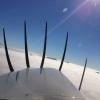
Another dead battery- again- ideas please?
carqwik replied to pkofman's topic in Modern Mooney Discussion
The M20M takes the sealed battery from Concorde or Gill. It is only this Gill battery that I'd say is "deficient." I have no experience with the normal lead acid battery from Gill. Batteryminder is a brand name of charger...seems to work pretty well. Yes you can charge two batteries from the tender but the instructions basically say that both batteries need to be fully charged at first if you try to hook up two batteries (I can't figure that out...what's the point then?). I just switch batteries week to week or so as to which gets some electrical feeding. -
Do a capacity test on both batteries. You may end up needing two new batteries if they have been neglected. If so, get two Concorde RG 24-15. Don't boost (jump) it to start and then take off with a low battery - you may need that sooner than you think if something goes wrong soon after take-off. If you ever go to a MAPA Homecoming and hear the presentation by the Concorde battery guy, he will tell you stories where people took off with nearly dead batteries and then ended up with in flight fires to deal with. Don't switch batteries in flight. On odd days of the month when I fly I use battery one for startup and fly on that battery. On even days I use battery two and stick with that one. Get with a very experienced Mooney Instructor to show you all the individual traits of the TLS so you are using it correctly and get a very experienced Mooney mechanic who works on these all the time to find out what specific maintenance you need to catch up on. The M model is a great airplane, I've had three of them, but it needs a lot of maintenance to get the most out of it. You might consider posting your logs and some on here could help you see some things that you might need to do to catch up on maintenance.


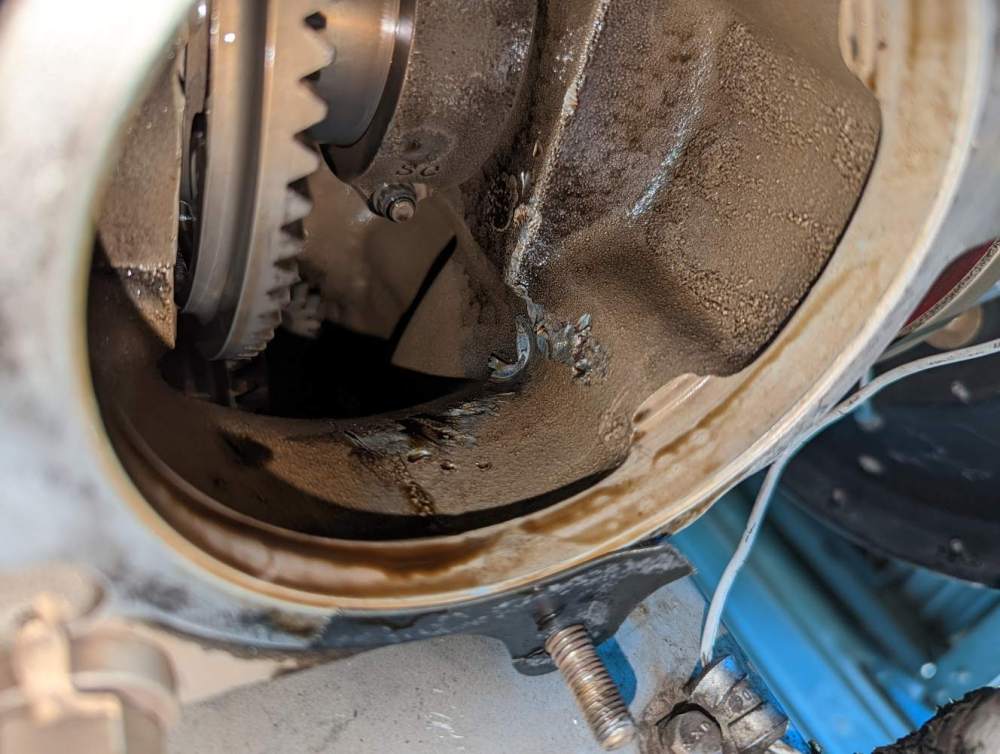

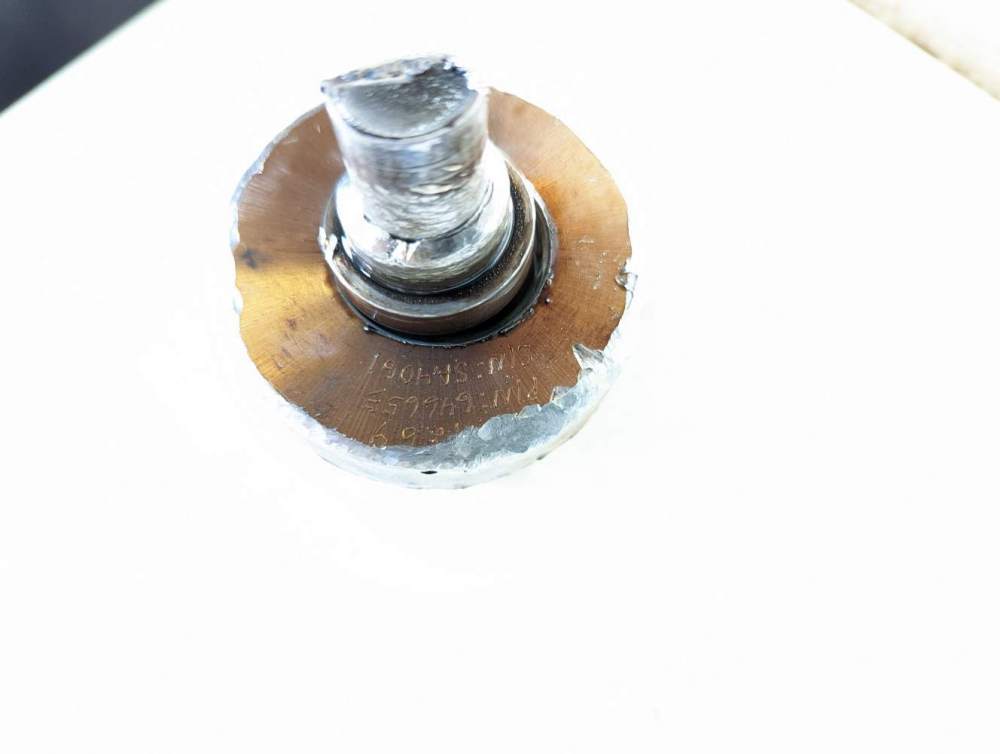
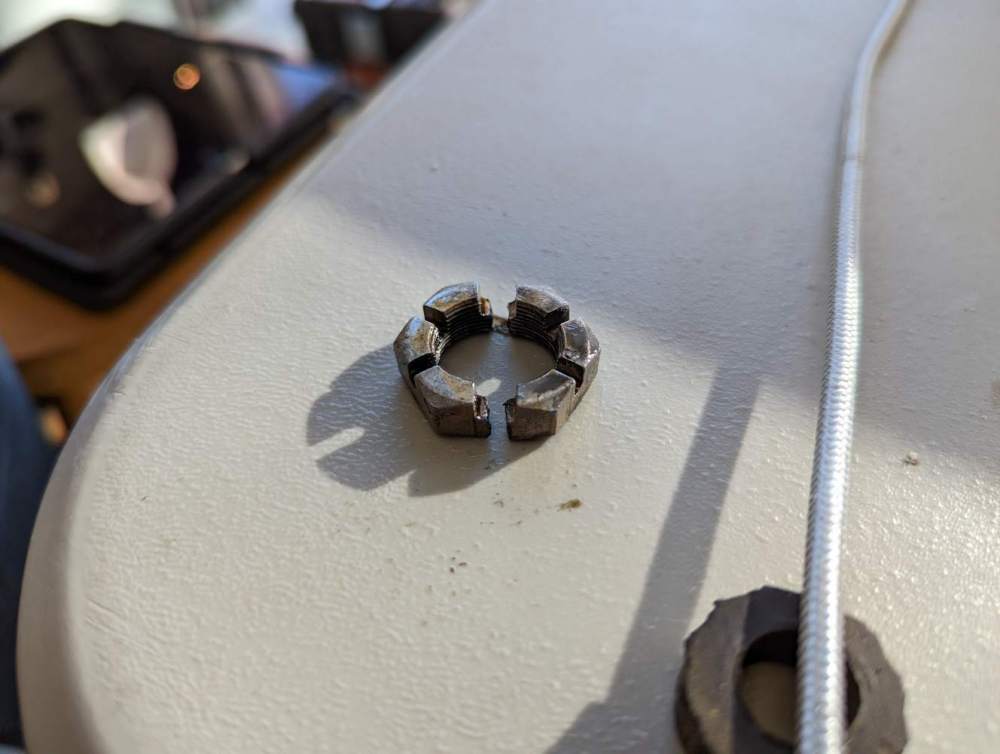






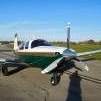
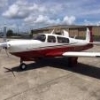


.thumb.jpg.3b7e6053543e5b3f345615b9eb4a086e.jpg)